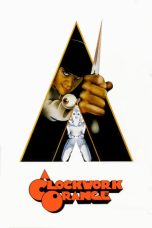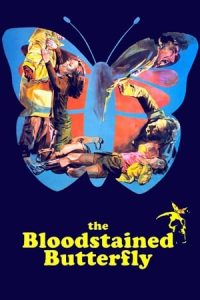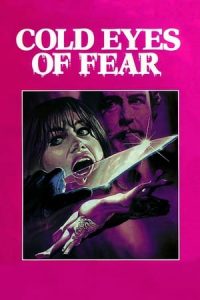- Source: 1971 in science
The year 1971 in science and technology involved some significant events, listed below.
Astronomy and space exploration
January 31 – Apollo program: Astronauts aboard Apollo 14 lift off for a mission to the Moon.
February 5 – Apollo 14 lands on the Moon.
February 9 – Apollo program: Apollo 14 returns to Earth after the third crewed Moon landing.
May 19 – Mars probe program: Mars 2 is launched by the Soviet Union.
May 30 – Mariner program: Mariner 9 is launched toward Mars.
June 30 – The crew of the Soyuz 11 spacecraft are killed when their air supply leaks out through a faulty valve during re-entry preparations, the only human deaths to occur outside Earth's atmosphere.
July 26 – Apollo program: Launch of Apollo 15. On July 31 the Apollo 15 astronauts become the first to ride in a lunar rover a day after landing on the Moon's surface.
November 13 – Mariner program: Mariner 9 enters Mars orbit.
Biology
July – Francis G. Howarth discovers communities of specialized thermophile cave animals living in lava tubes at Hawaii Volcanoes National Park.
C. A. W. Jeekel publishes Nomenclator Generum et Familiarum Diplopodorum.
John O'Keefe discovers place cells in the mammalian brain.
Computer science
July 4 – Michael S. Hart posts the first e-book, a copy of the United States Declaration of Independence, on the University of Illinois at Urbana–Champaign's mainframe computer, the origin of Project Gutenberg.
November 3 – The Unix Programmer's Manual is published.
November 15 – Intel release the world's first microprocessor, the 4004.
November/December – Computer Space is released, the first arcade video game.
Ray Tomlinson sends the first ARPAnet e-mail between host computers, at BBN, Cambridge, Massachusetts, with the first use of the @ sign in an address.
Kenbak-1 goes on sale, considered to be the world's first personal computer by the Computer History Museum and the American Computer Museum.
The earliest floppy disks, 8 inches in diameter, become commercially available as components of products shipped by IBM, their inventor.
Conservation
February 2 – The international Ramsar Convention for the conservation and sustainable utilization of wetlands is signed in Ramsar, Mazandaran, Iran.
Earth sciences
February 9 – The San Fernando (Sylmar) earthquake occurs in southern California with a magnitude of 6.6 and a perceived intensity of XI (extreme) on the Modified Mercalli intensity scale.
Mathematics
Stephen Cook introduces the concept of NP-completeness in computational complexity theory at the 3rd Annual ACM Symposium on Theory of Computing.
Daniel Quillen publishes a proof of the Adams conjecture.
Steven Takiff introduces Takiff algebras.
The Quine–Putnam indispensability argument is first presented explicitly, by Hilary Putnam in his book Philosophy of Logic.
Medicine
October 1 – Godfrey Hounsfield's invention, X-ray computed tomography, is first used on a patient with a cerebral cyst at Atkinson Morley Hospital in Wimbledon, London.
Boston Women's Health Book Collective publishes Our Bodies, Ourselves in the U.S.
E. G. L. Bywaters characterises adult-onset Still's disease, a rare form of inflammatory arthritis.
Smallpox is eradicated from the Americas.
Paleontology
August 3 – The Fighting Dinosaurs, a fossil specimen featuring a Velociraptor and a Protoceratops in combat, is first located in the Late Cretaceous Djadochta Formation of Mongolia by a Polish-Mongolian team.
Physics
Roger Penrose proposes the Penrose process.
Psychology
August 14–20 – Stanford prison experiment.
Konrad Lorenz publishes Studies in Animal and Human Behavior, Volume II.
Technology
Richard H. Frenkiel, Joel S. Engel and Philip T. Porter of Bell Labs in the United States set out the parameters for a practical cellular telephone network.
J. J. Stiffler publishes his book Theory of Synchronous Communications and edits a special issue of IEEE Transactions on Communication Technology on error correction codes.
Institutions
Paris Descartes University begins to function in continuation of the medical department of the University of Paris.
Awards
Nobel Prizes
Physics – Dennis Gabor
Chemistry – Gerhard Herzberg
Medicine – Earl W Sutherland, Jr
Turing Award – John McCarthy
Births
May 29 – Howard Gobioff (d. 2008), American computer scientist.
June 28 – Elon Musk, South African-born Canadian-American entrepreneur, engineer, inventor and investor.
July 4 – Sivakumar Veerasamy, Indian plant geneticist.
July 21 – Sara Seager, Canadian-American astrophysicist.
August 2 – Ruth Lawrence, English-born mathematician.
Deaths
January 23 – Fritz Feigl (b. 1891), Austrian-born Brazilian chemist
January 25 – Donald Winnicott (b. 1896), English child psychiatrist.
February 16 – Heinrich Willi (b. 1900), Swiss pediatrician.
February 25 – Theodor Svedberg (b. 1884), Swedish chemist, Nobel Prize laureate
March 11 – Philo T. Farnsworth (b. 1906), American television pioneer.
April 1 – Dame Kathleen Lonsdale (b. 1903), Irish-born crystallographer.
April 6 – Margaret Newton (b. 1887), Canadian plant pathologist.
April 12 – Igor Tamm (b. 1895), Russian physicist, Nobel Prize laureate
June 6 – Edward Andrade (b. 1887), English physicist.
June 15
Hillel Oppenheimer (b. 1899), German-born Israeli botanist.
Wendell Meredith Stanley (b. 1904), American chemist, Nobel Prize laureate.
June 30 – Soviet cosmonauts
Georgy Dobrovolsky (b. 1928)
Vladislav Volkov (b. 1935)
Viktor Patsayev (b. 1933)
September 15 – Benno Mengele (b. 1898), Austrian electrical engineer
References
Kata Kunci Pencarian:
- Association for Women in Science
- Elon Musk
- Fadli Zon
- Kaharuddin Djenod
- Donald Trump
- Hierarki kebutuhan Maslow
- Muhammad
- Hans Kelsen
- Sibernetika
- Indonesia
- 1971 in science
- 1971
- Stanford prison experiment
- 1971 in film
- Indo-Pakistani war of 1971
- 1971 in music
- Hafele–Keating experiment
- Science fiction film
- History of science
- Minister for Science (Canada)
- 1
- 2
The Bloodstained Butterfly (1971)
Cold Eyes of Fear (1971)
The Ritual (2017)
Three Billboards Outside Ebbing, Missouri (2017)
No More Posts Available.
No more pages to load.














